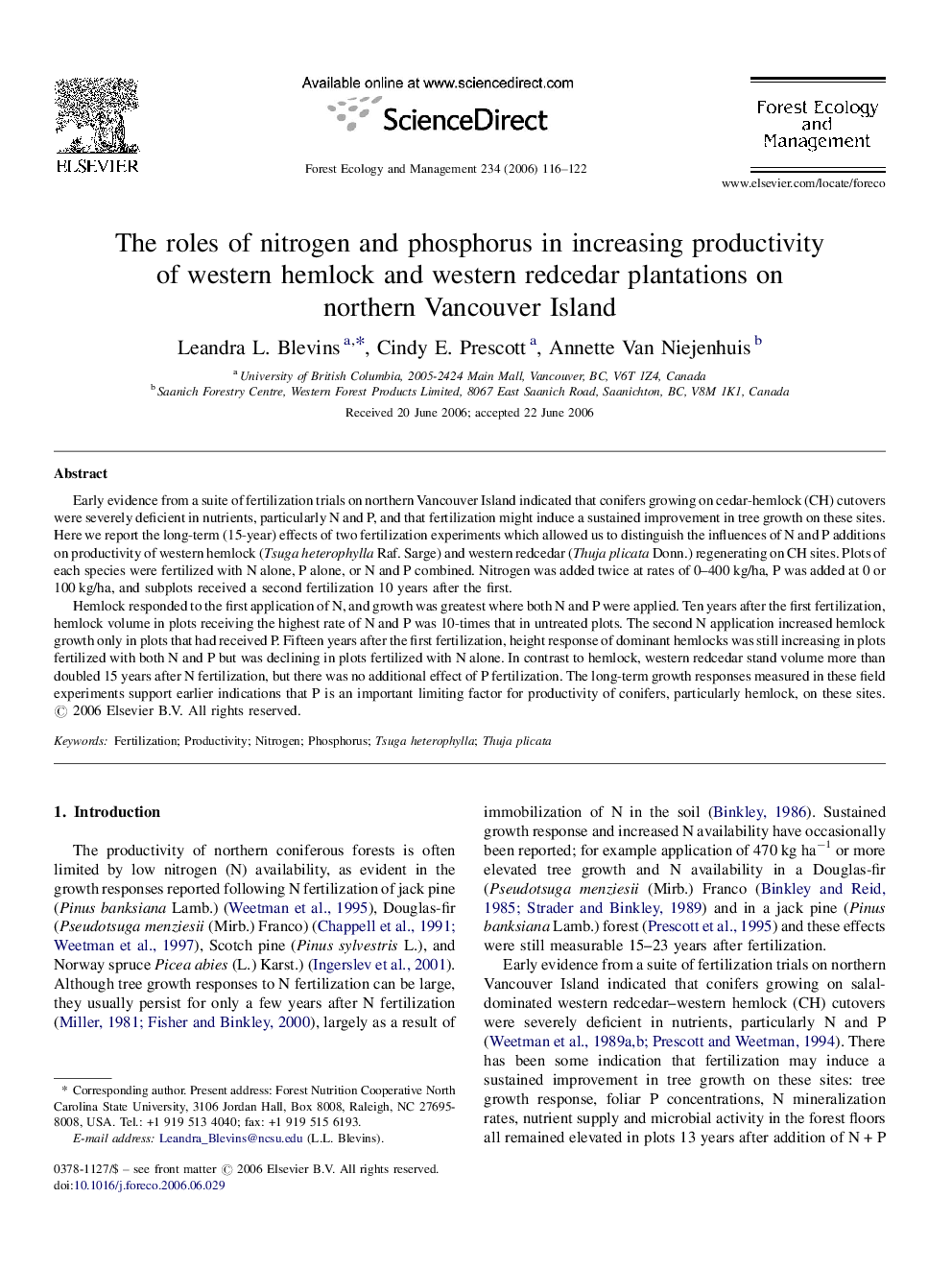| Article ID | Journal | Published Year | Pages | File Type |
|---|---|---|---|---|
| 90198 | Forest Ecology and Management | 2006 | 7 Pages |
Early evidence from a suite of fertilization trials on northern Vancouver Island indicated that conifers growing on cedar-hemlock (CH) cutovers were severely deficient in nutrients, particularly N and P, and that fertilization might induce a sustained improvement in tree growth on these sites. Here we report the long-term (15-year) effects of two fertilization experiments which allowed us to distinguish the influences of N and P additions on productivity of western hemlock (Tsuga heterophylla Raf. Sarge) and western redcedar (Thuja plicata Donn.) regenerating on CH sites. Plots of each species were fertilized with N alone, P alone, or N and P combined. Nitrogen was added twice at rates of 0–400 kg/ha, P was added at 0 or 100 kg/ha, and subplots received a second fertilization 10 years after the first.Hemlock responded to the first application of N, and growth was greatest where both N and P were applied. Ten years after the first fertilization, hemlock volume in plots receiving the highest rate of N and P was 10-times that in untreated plots. The second N application increased hemlock growth only in plots that had received P. Fifteen years after the first fertilization, height response of dominant hemlocks was still increasing in plots fertilized with both N and P but was declining in plots fertilized with N alone. In contrast to hemlock, western redcedar stand volume more than doubled 15 years after N fertilization, but there was no additional effect of P fertilization. The long-term growth responses measured in these field experiments support earlier indications that P is an important limiting factor for productivity of conifers, particularly hemlock, on these sites.
